
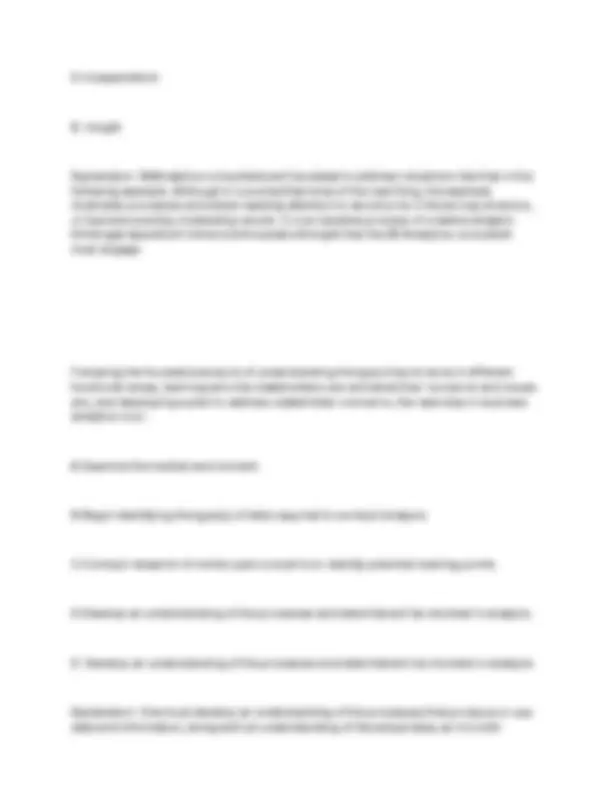
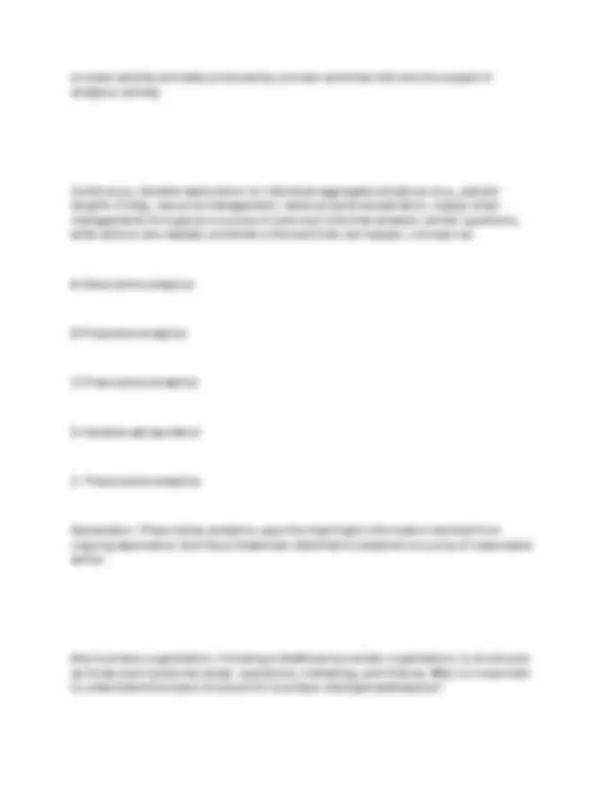
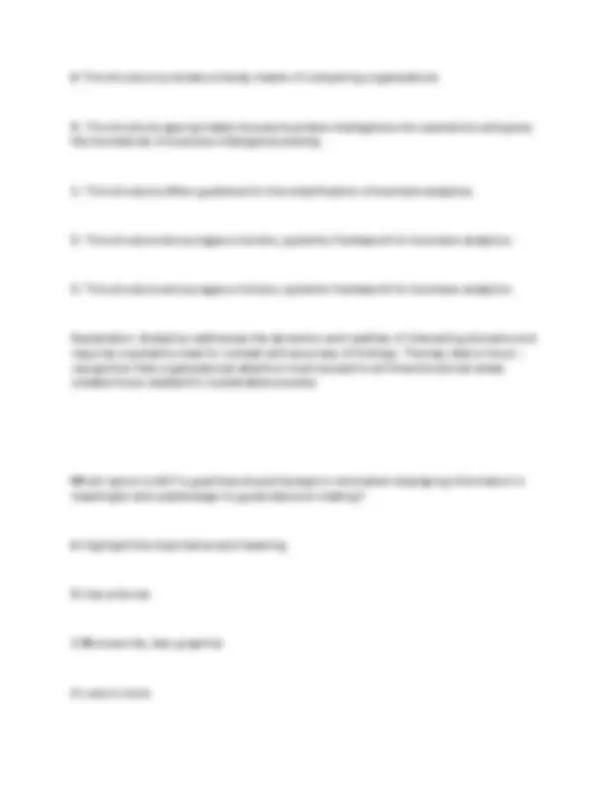
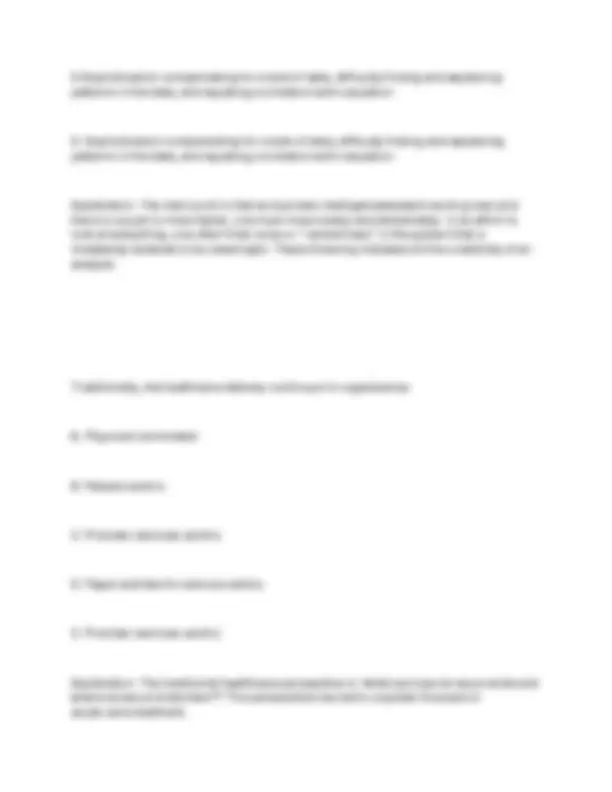
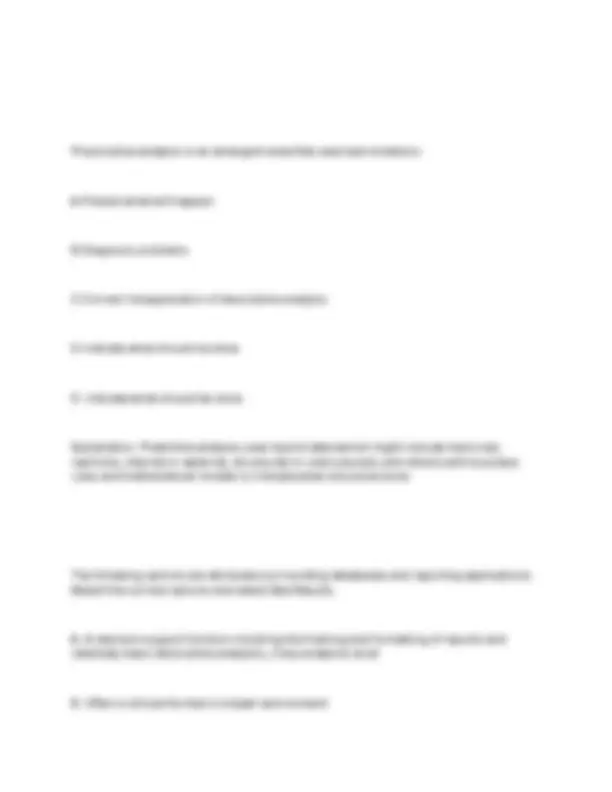
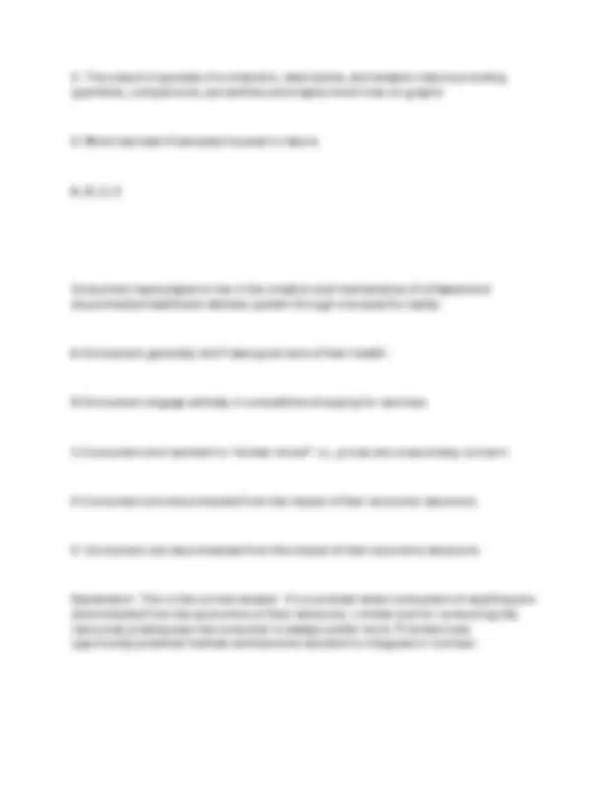
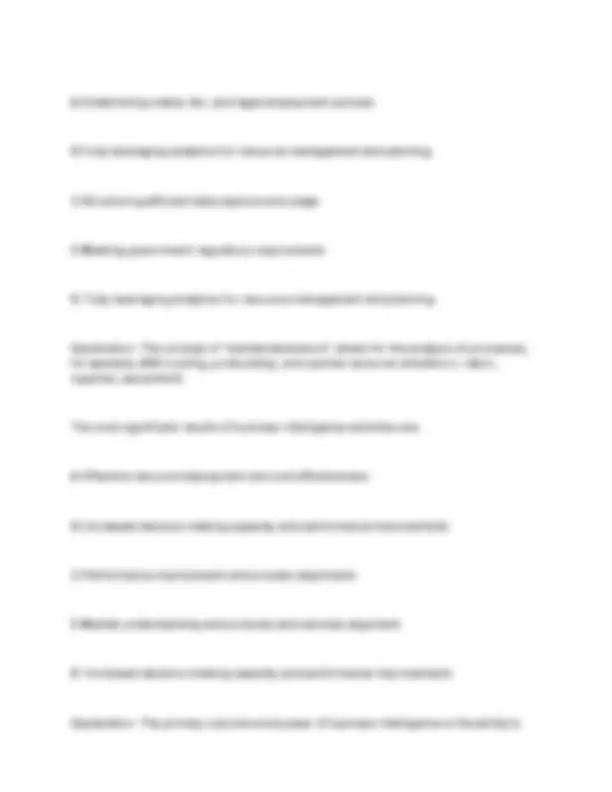
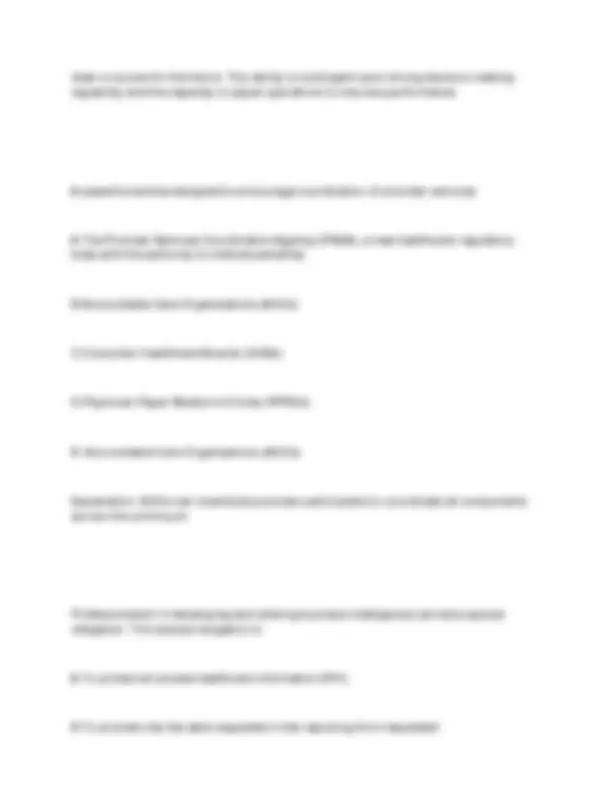
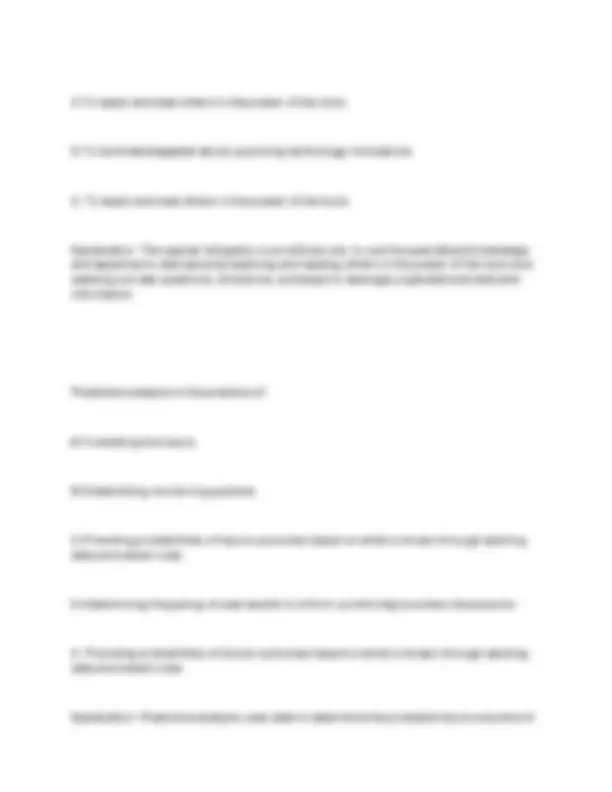
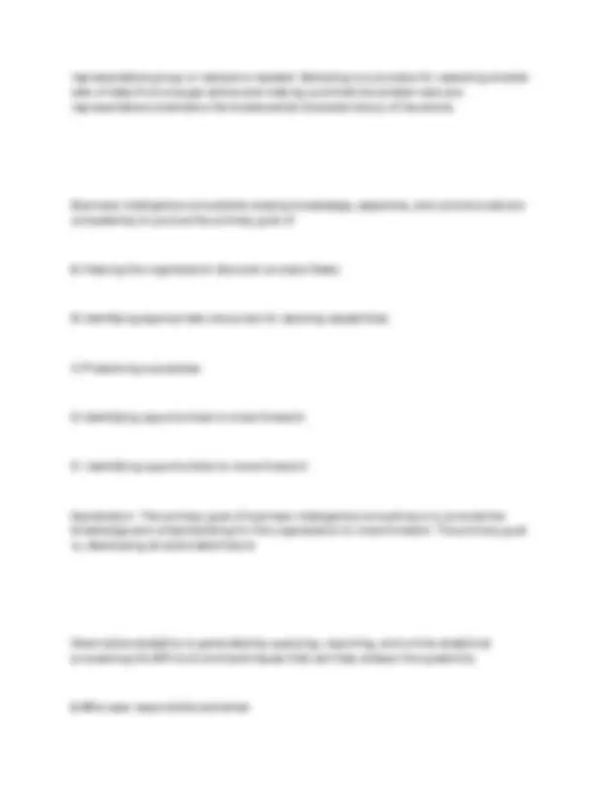
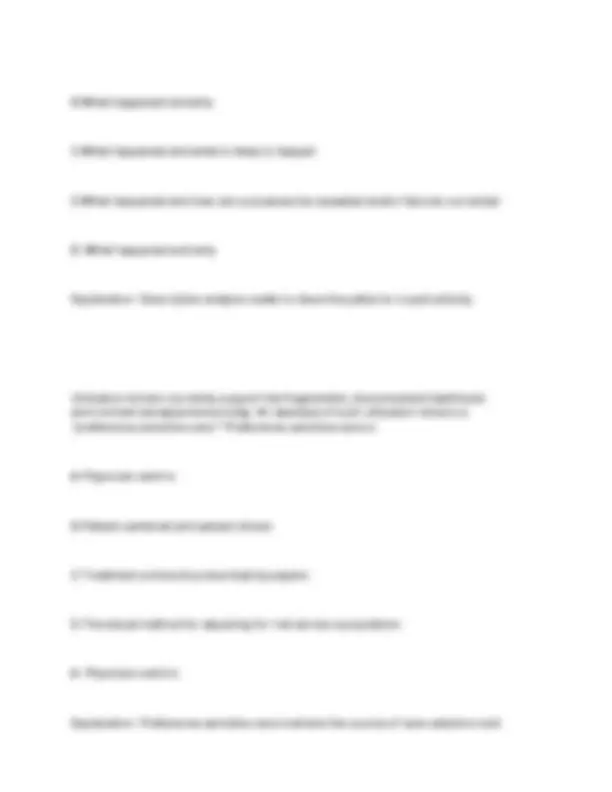
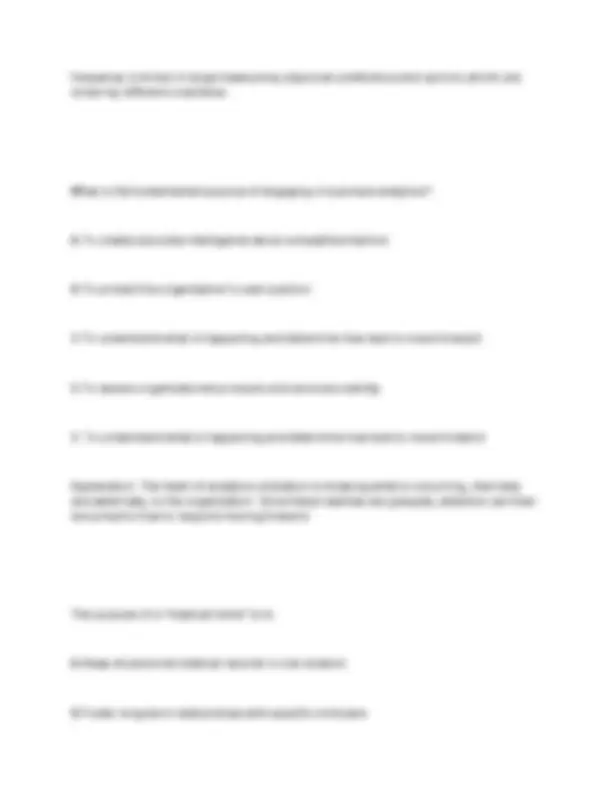
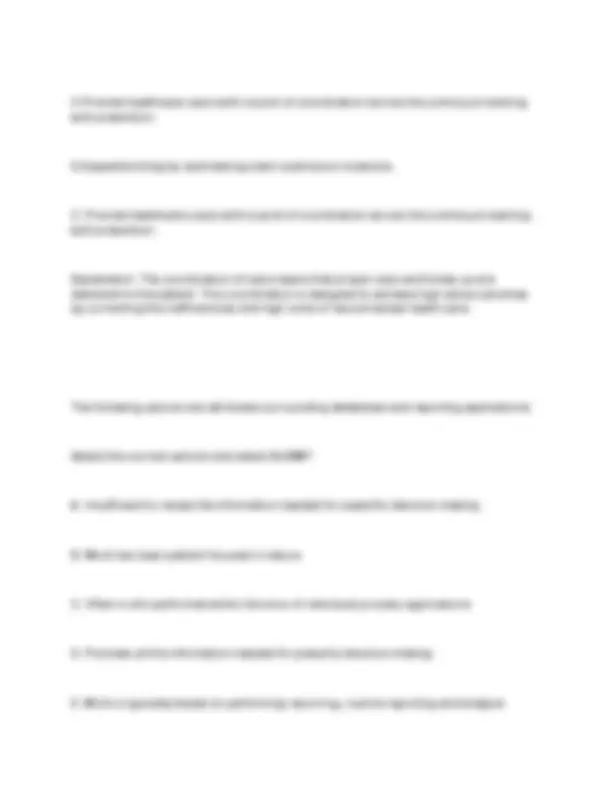
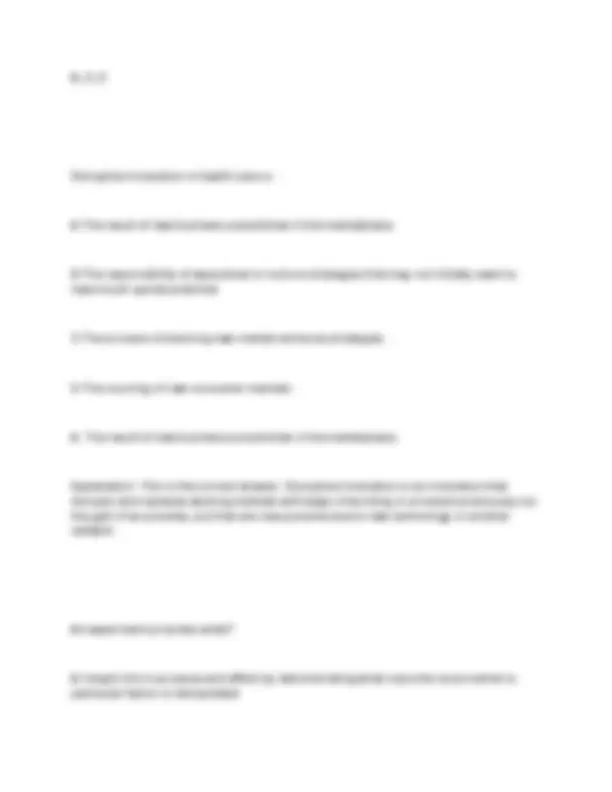
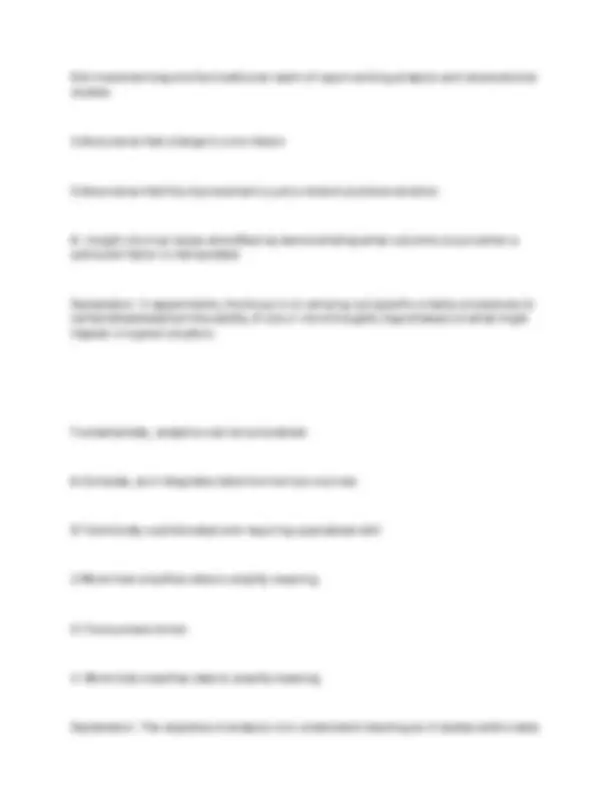
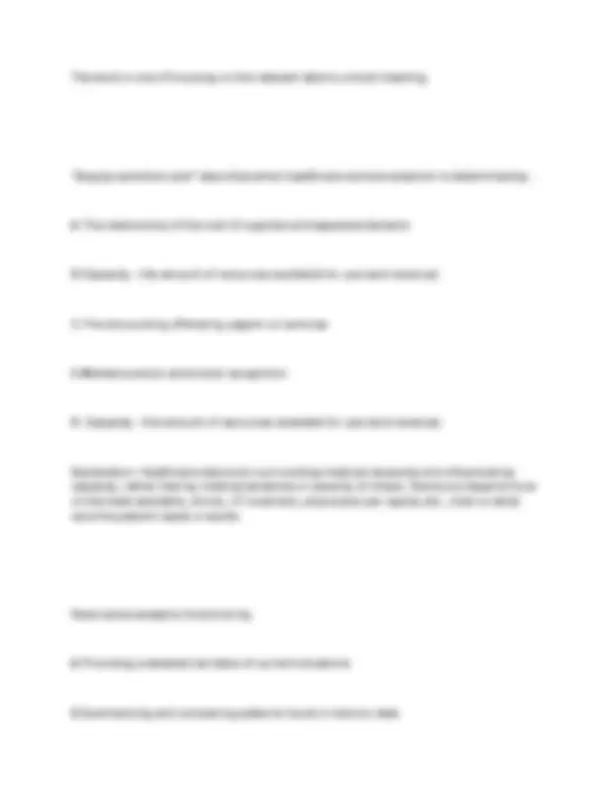
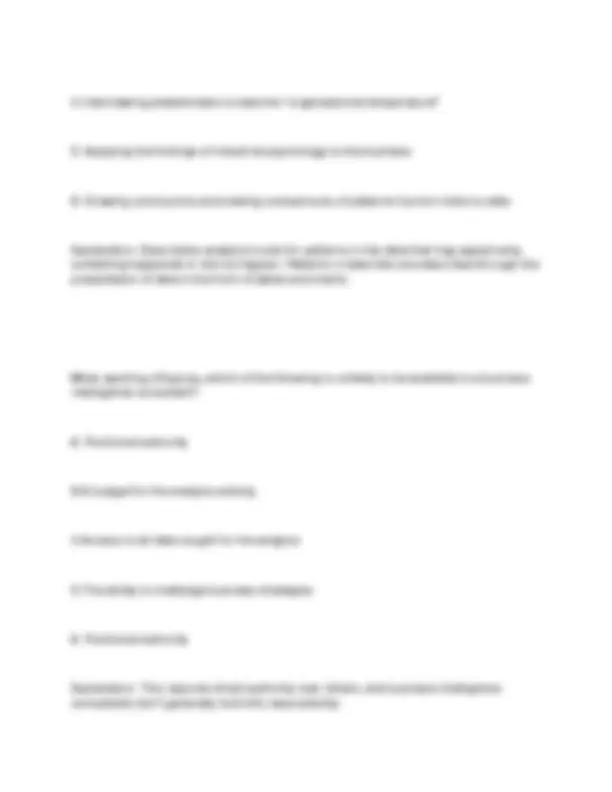
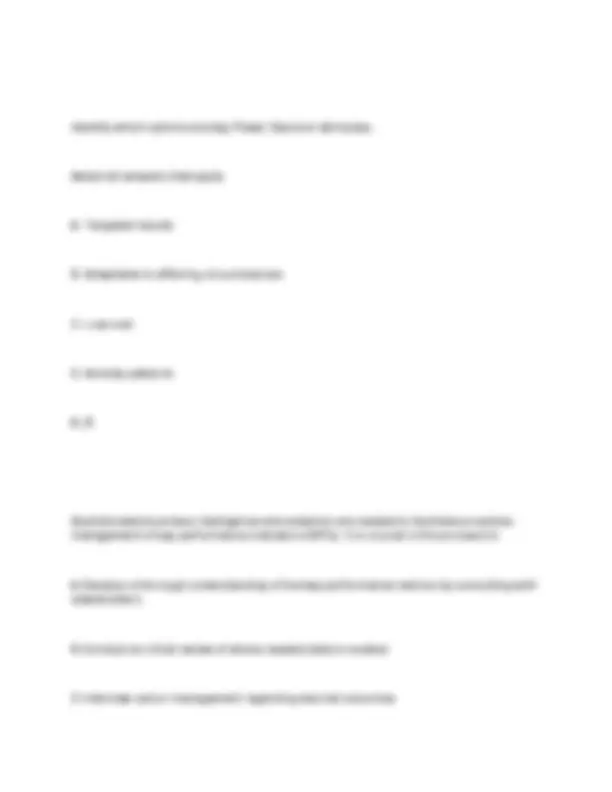
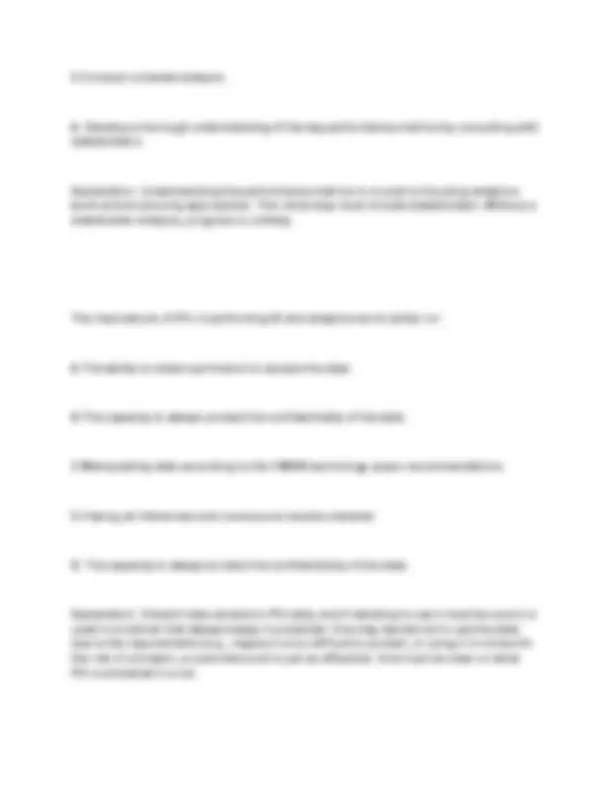
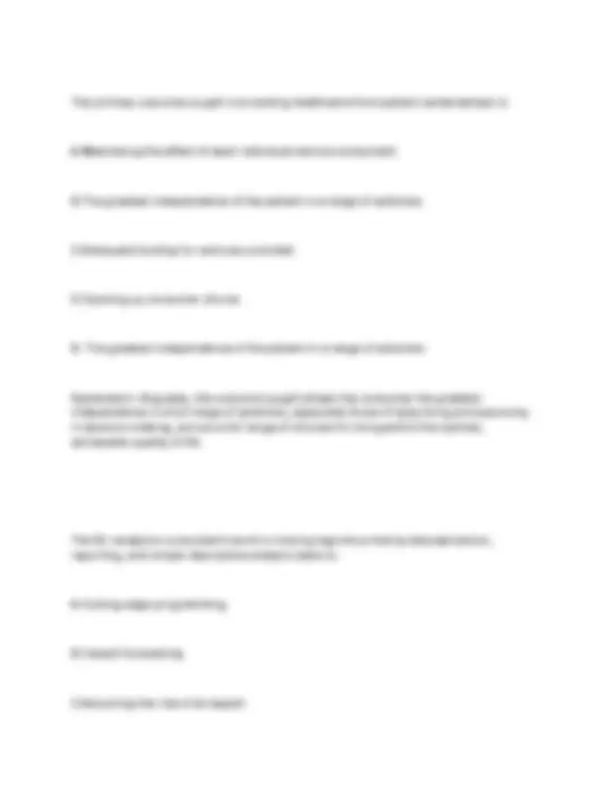
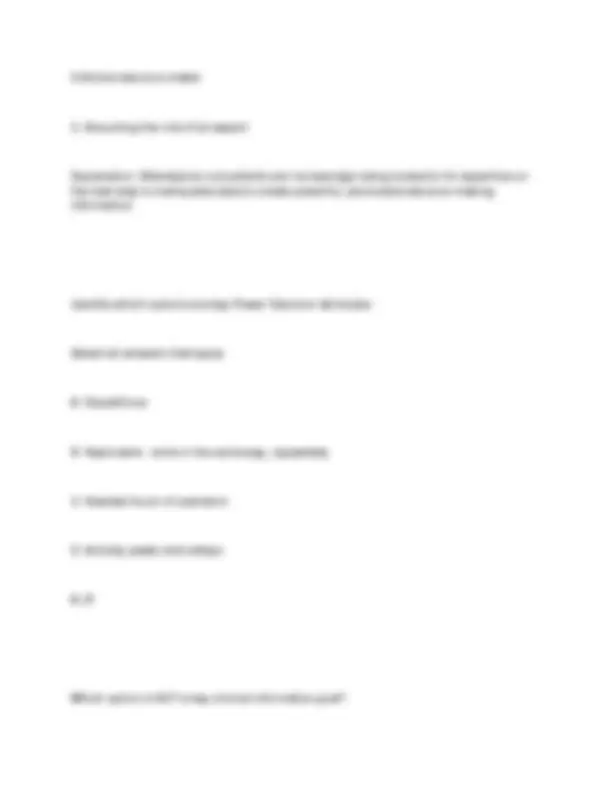
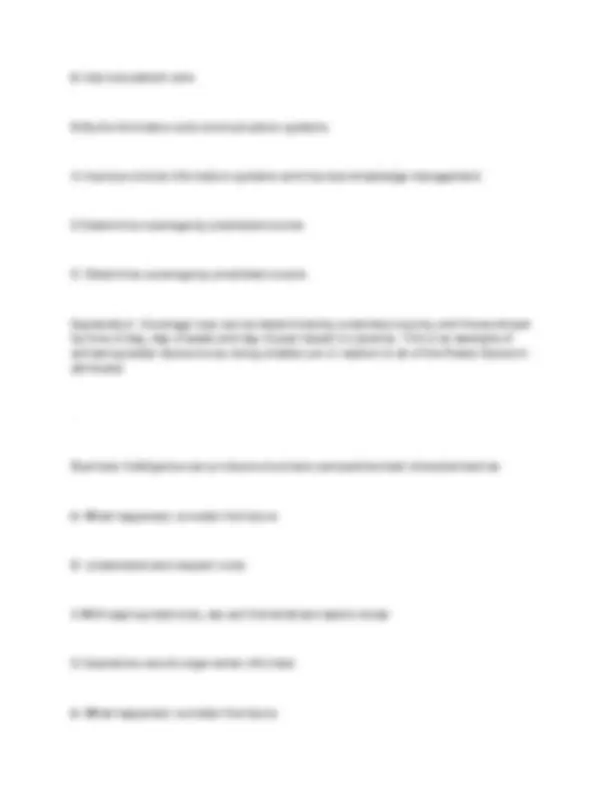
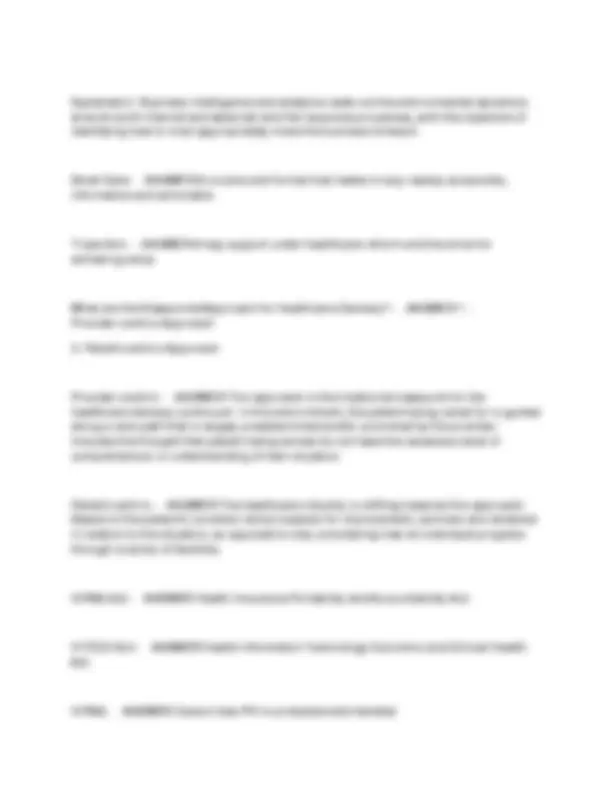
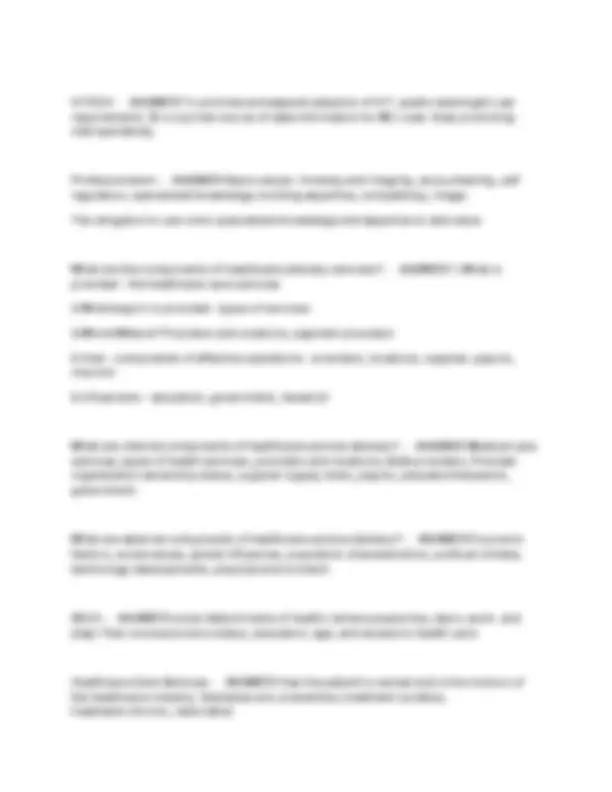
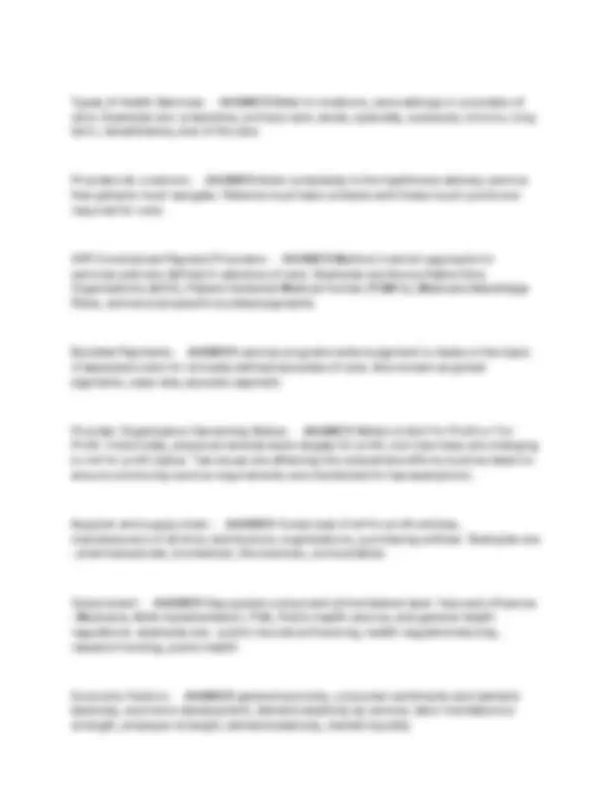
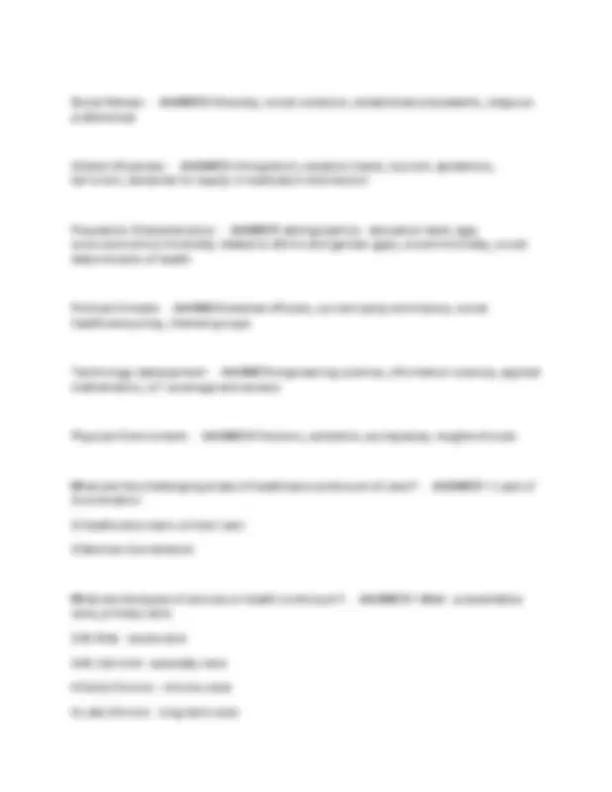
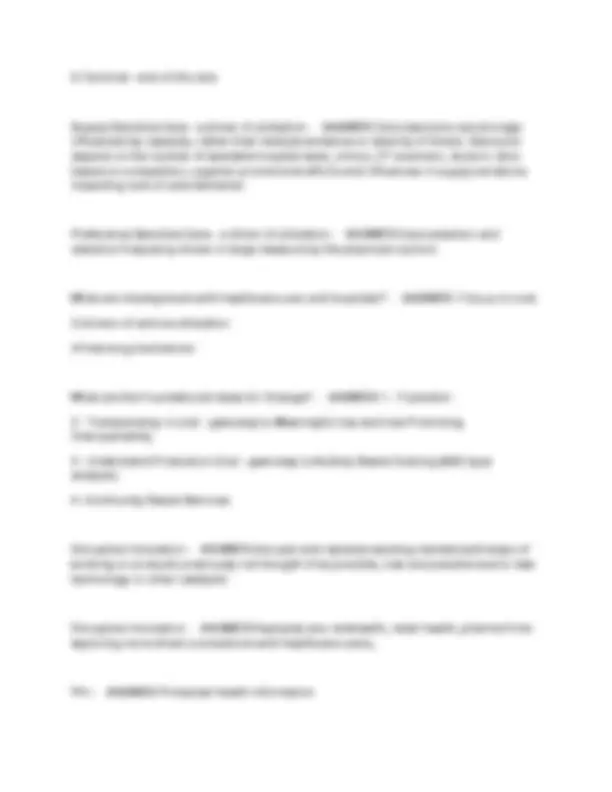
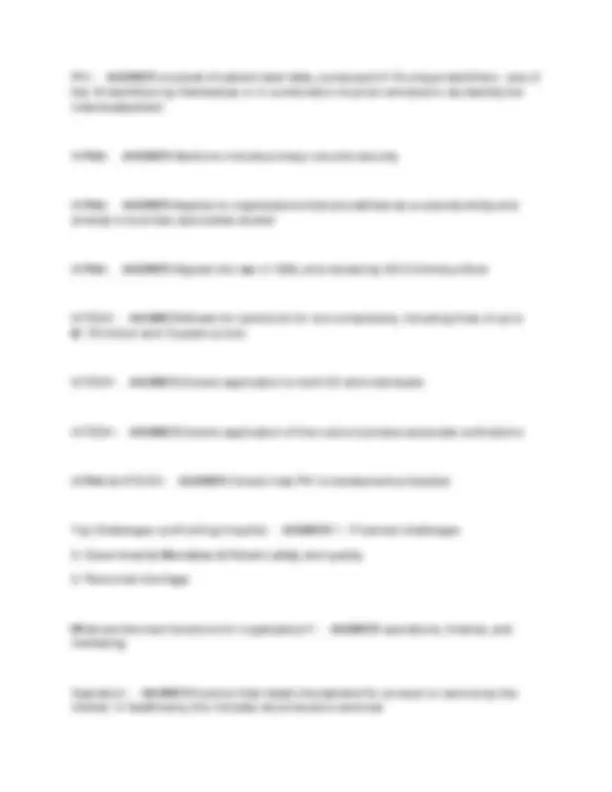
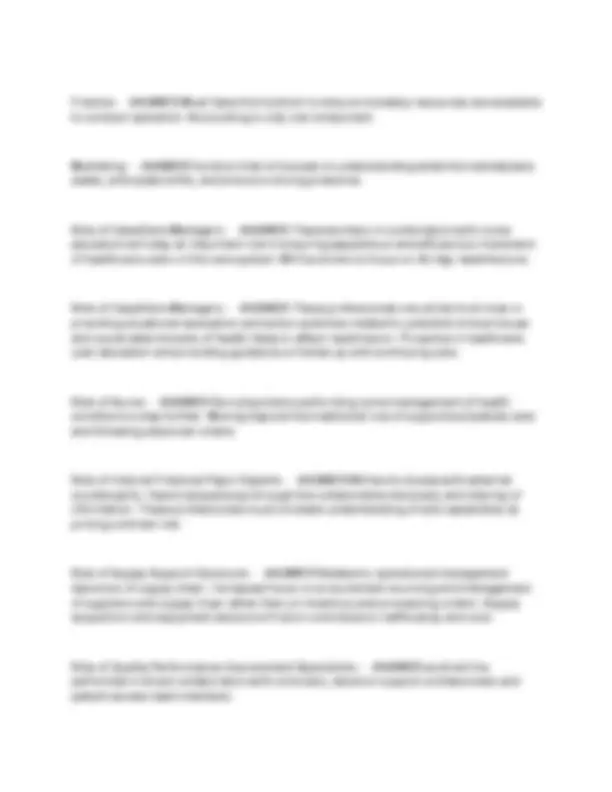
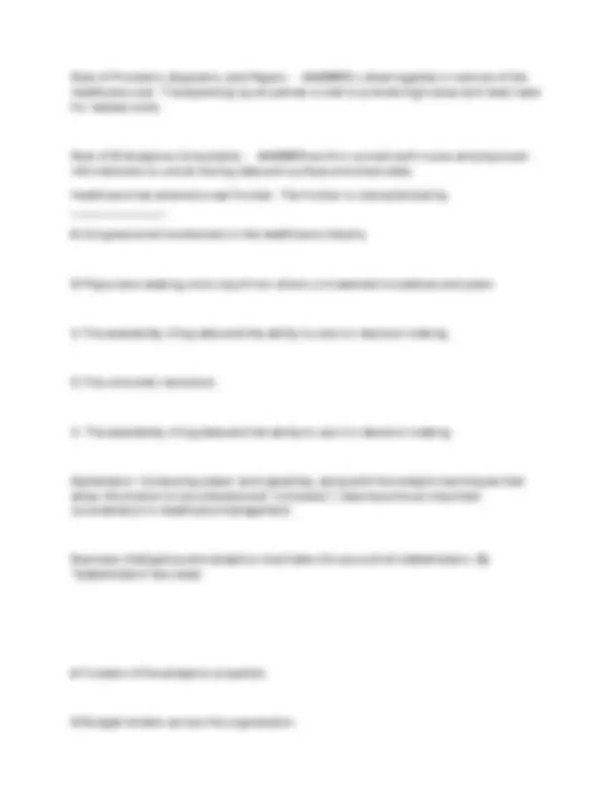
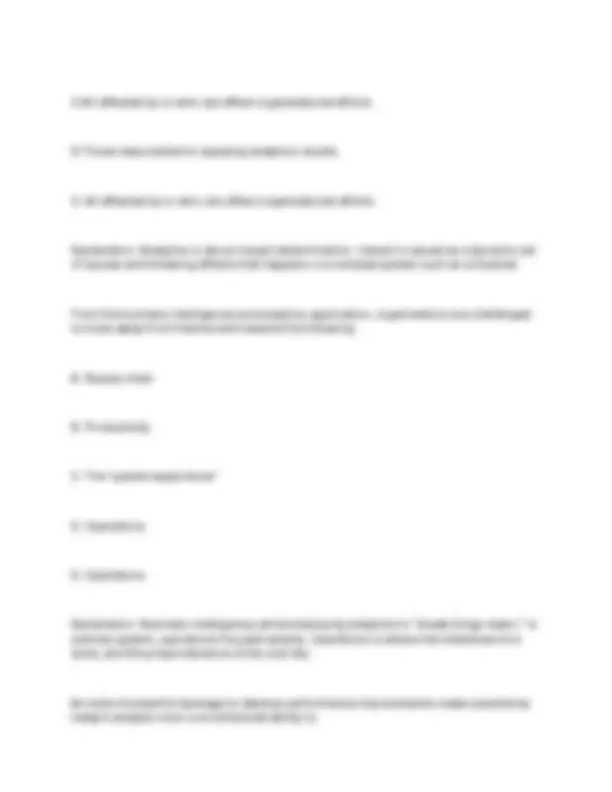
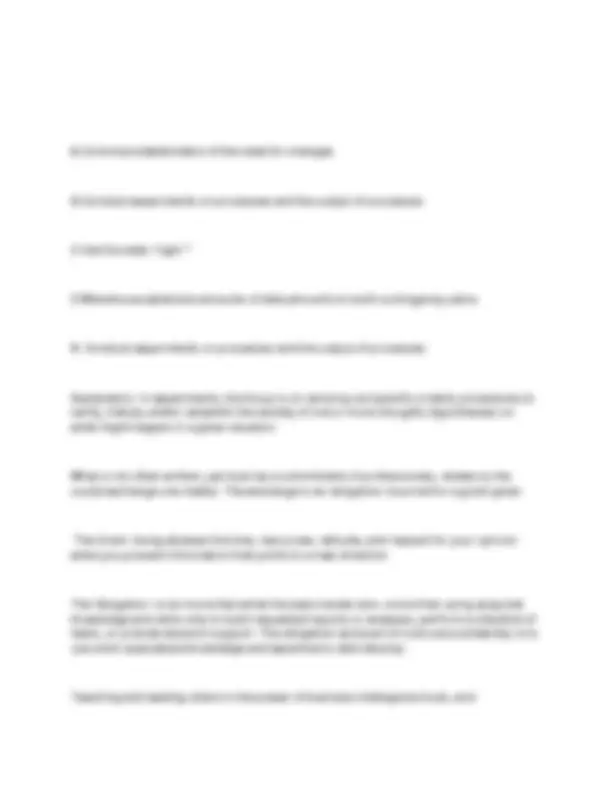
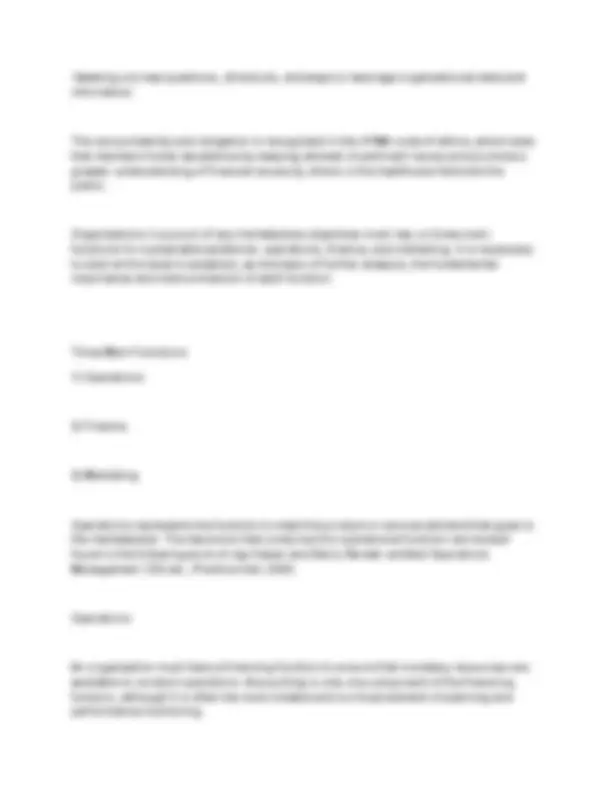
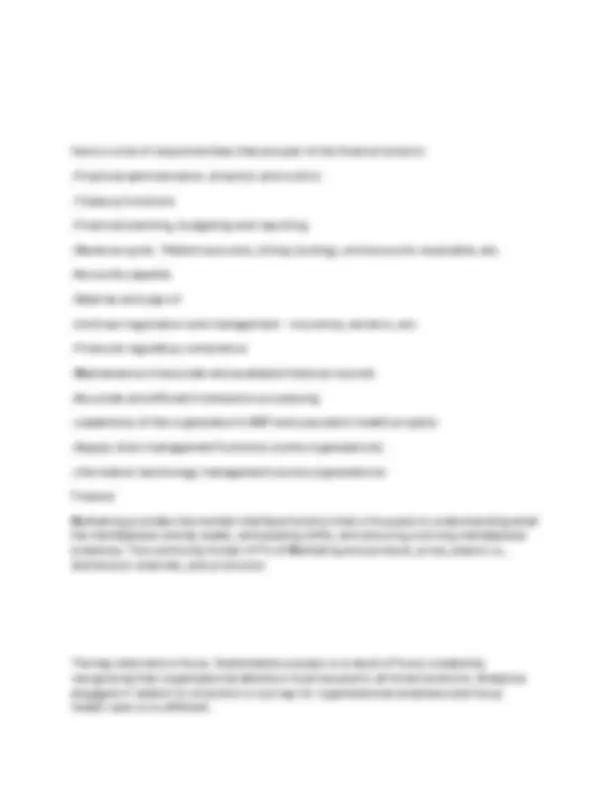
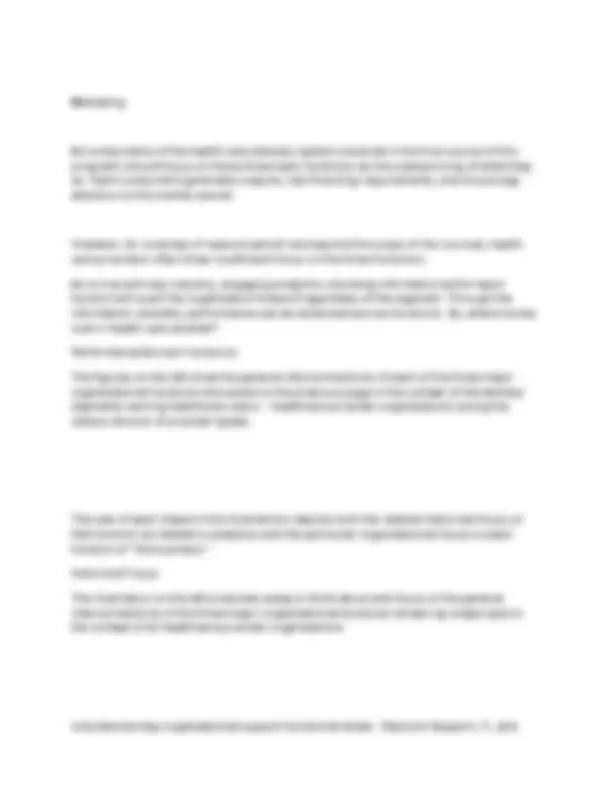
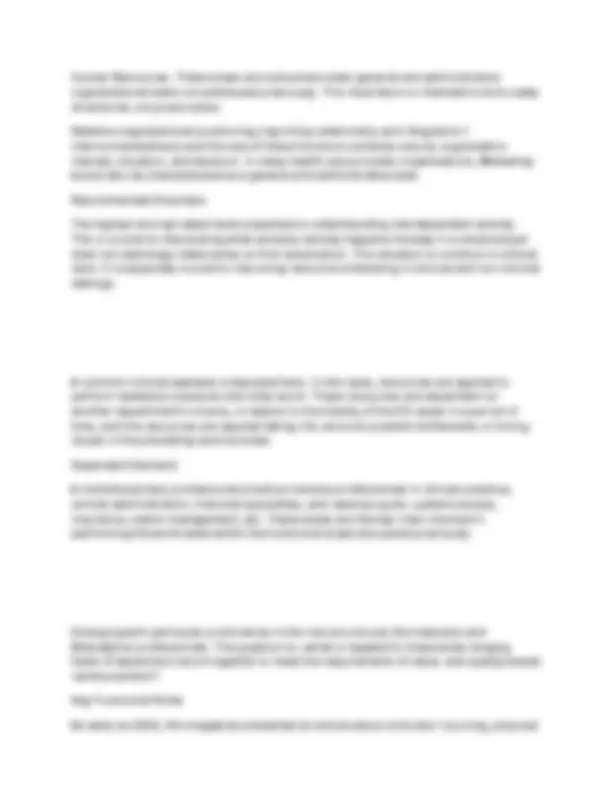
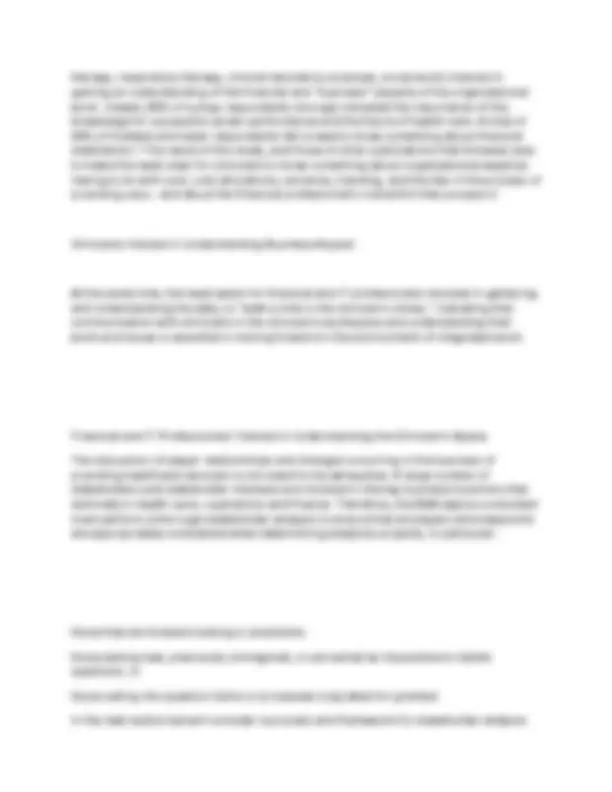
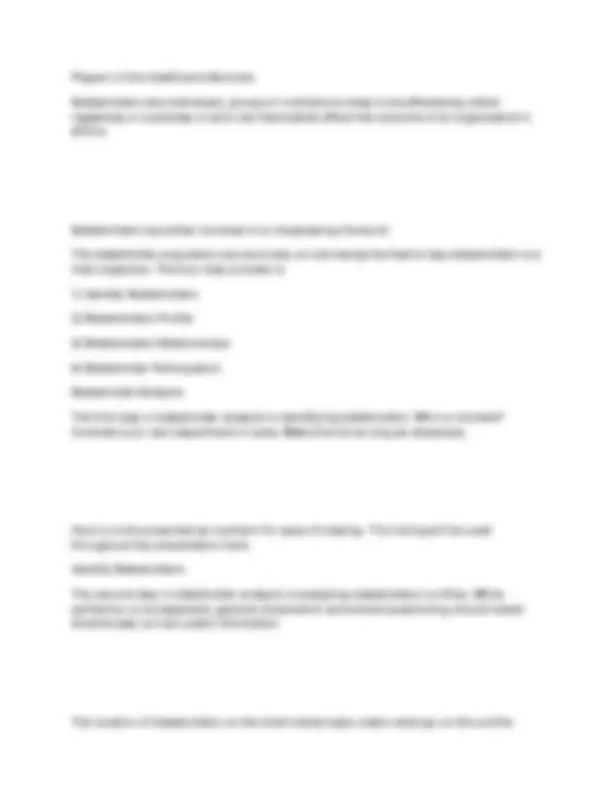
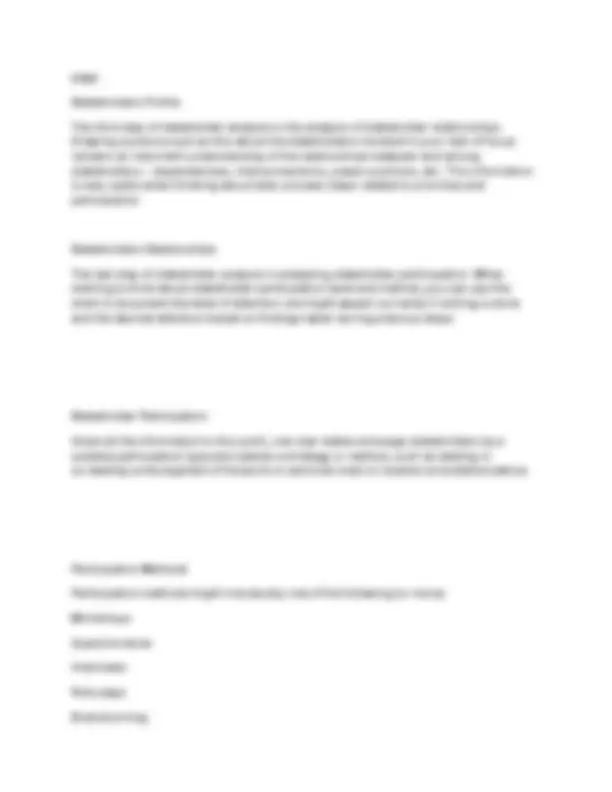
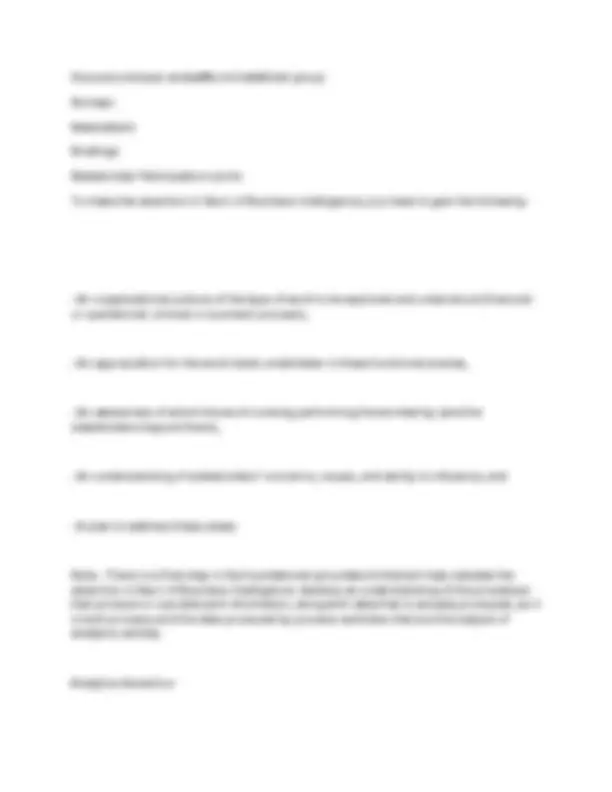
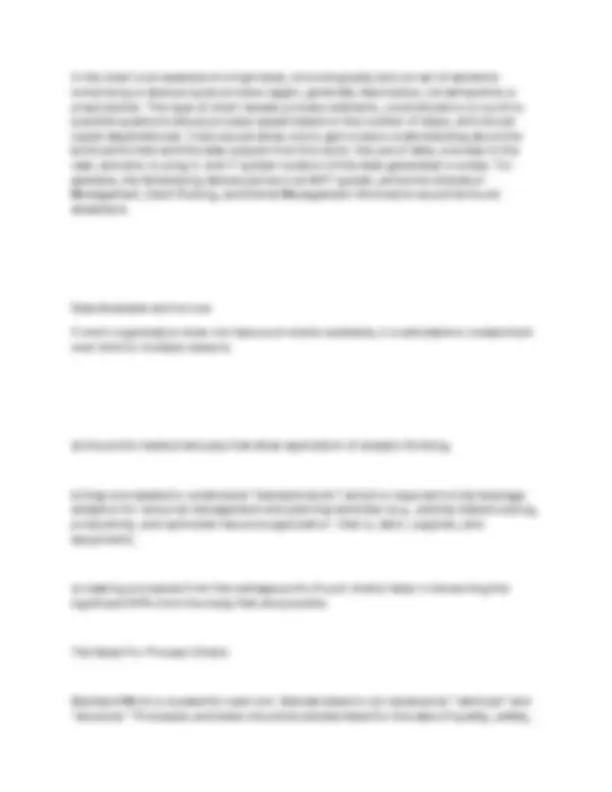
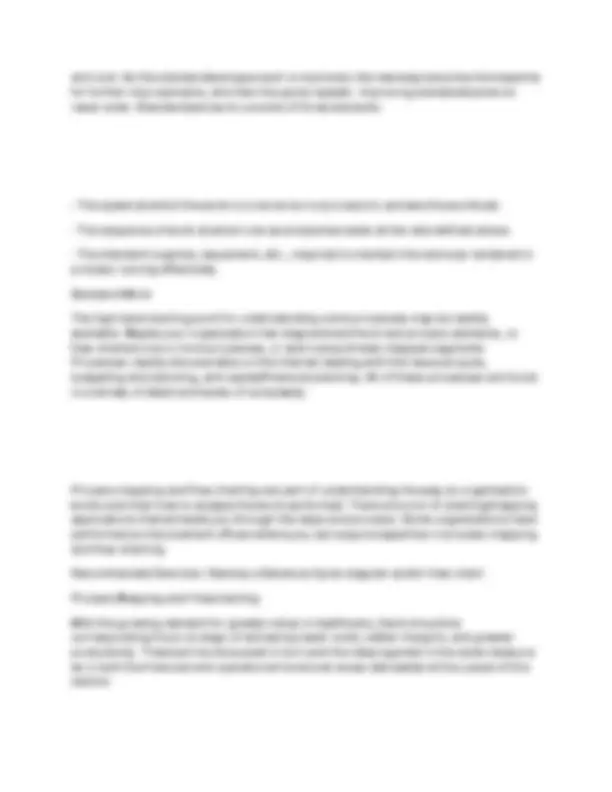
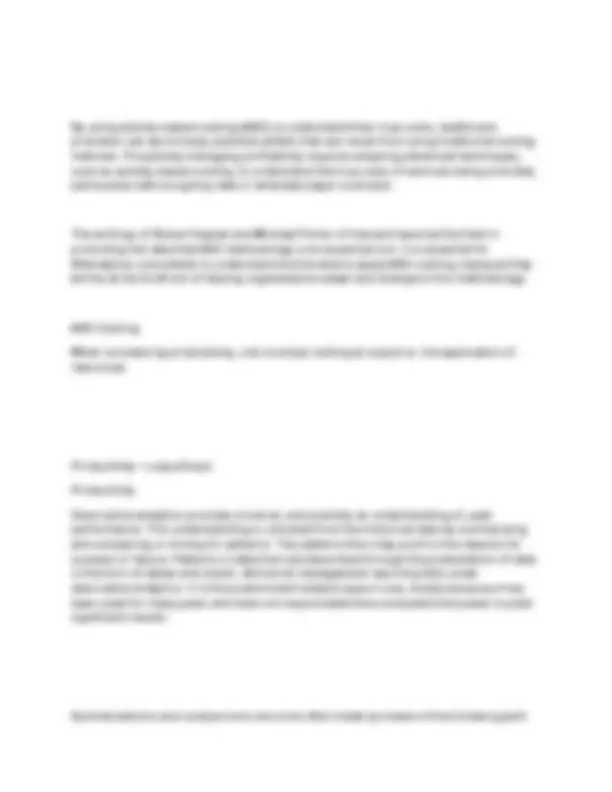
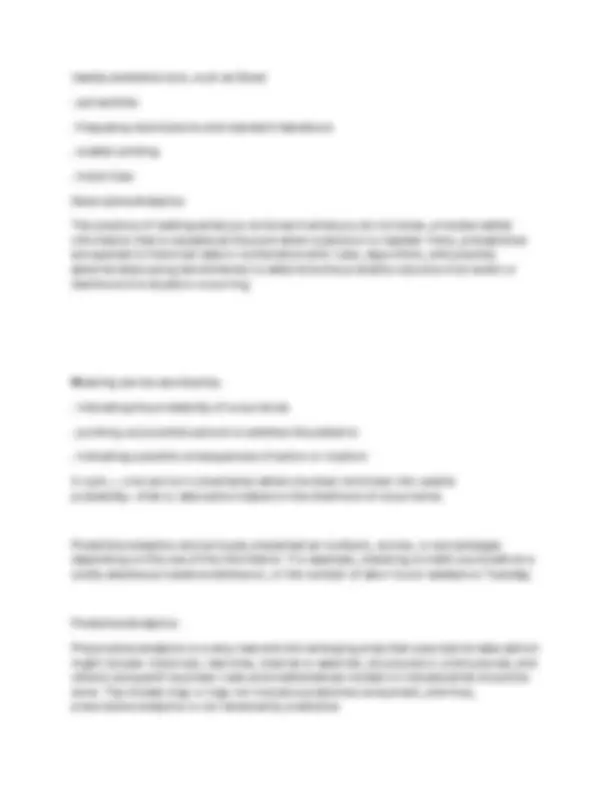
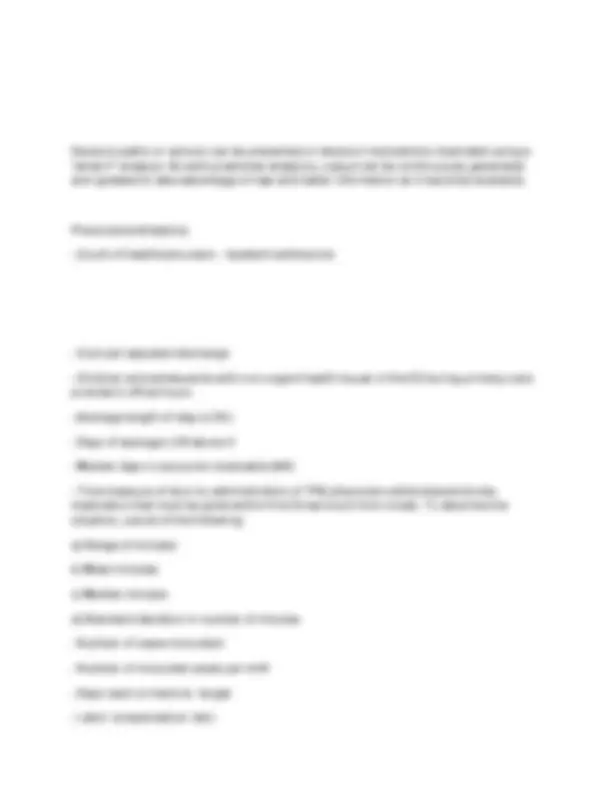
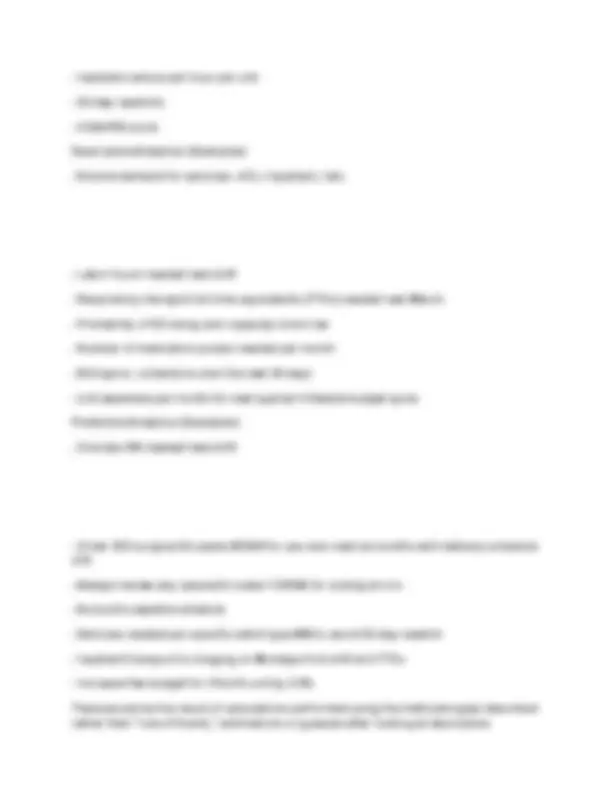
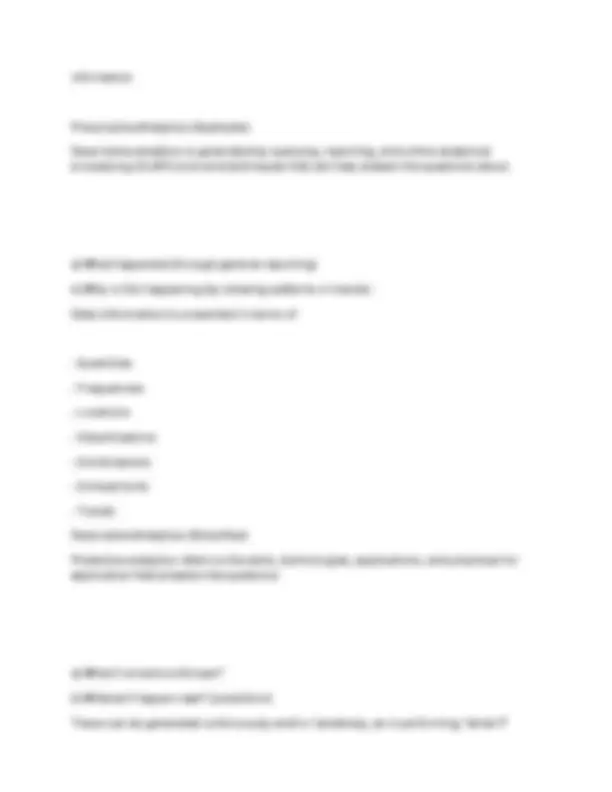
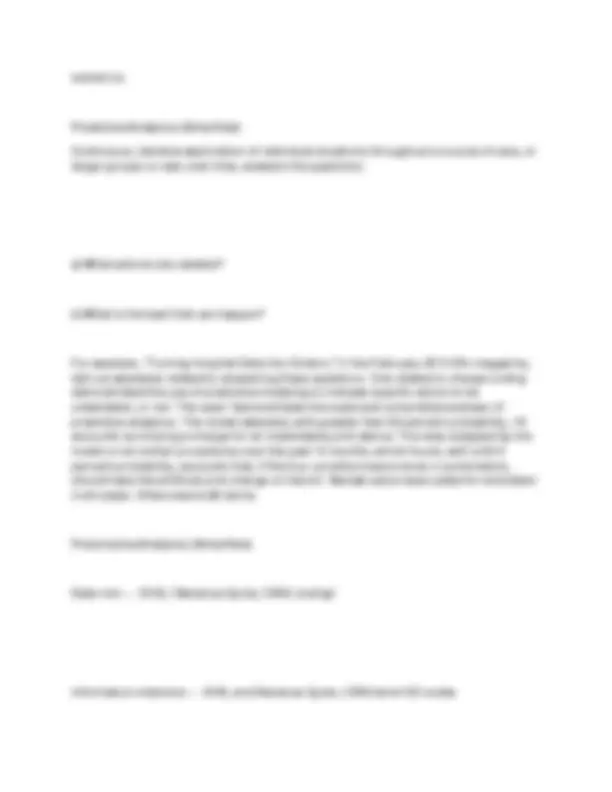
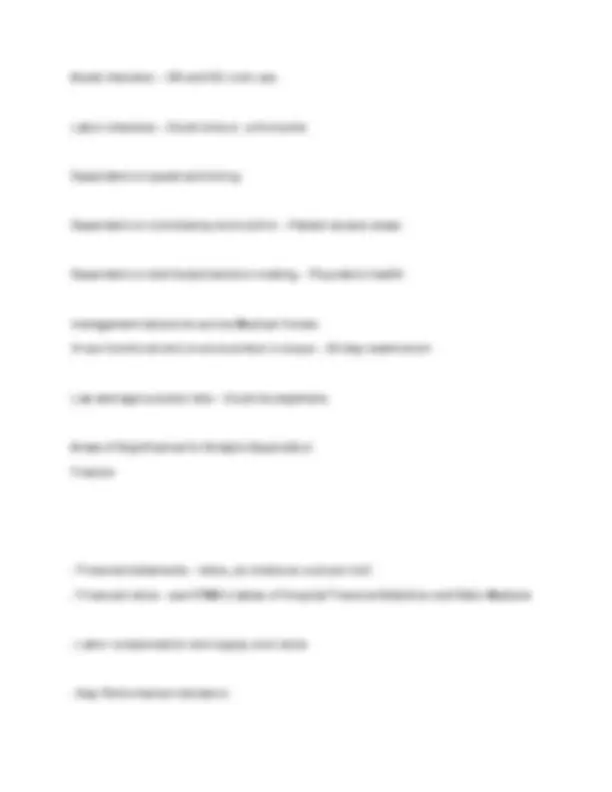
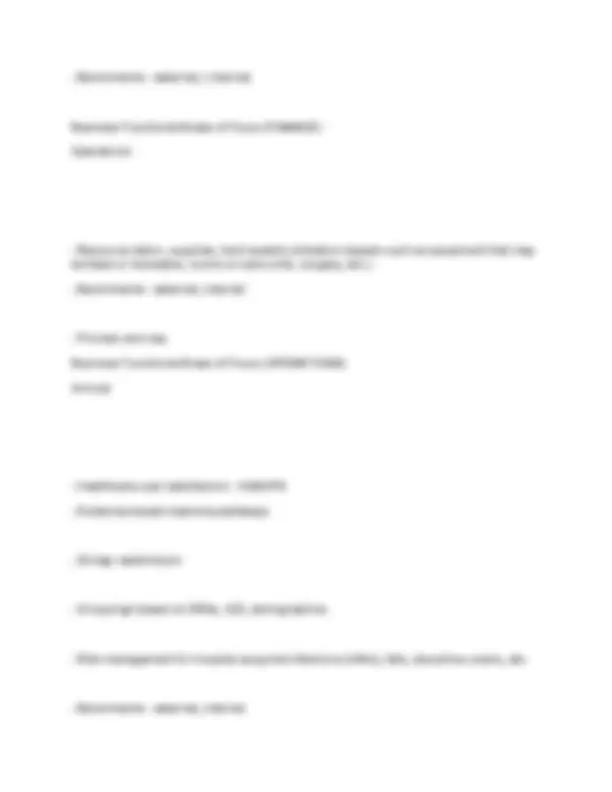
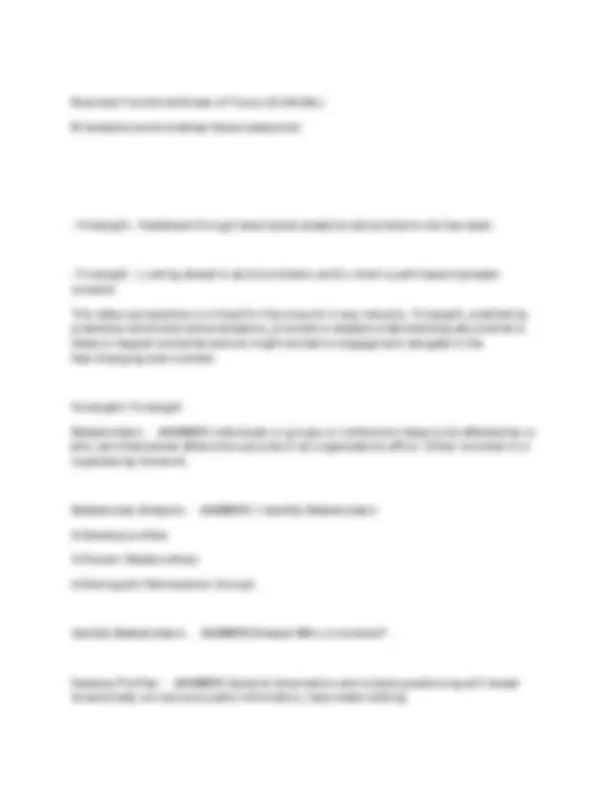
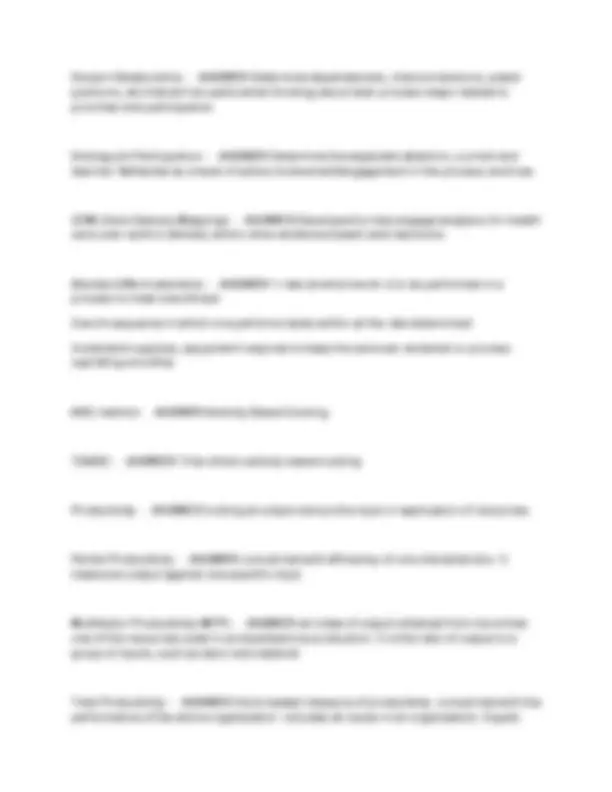
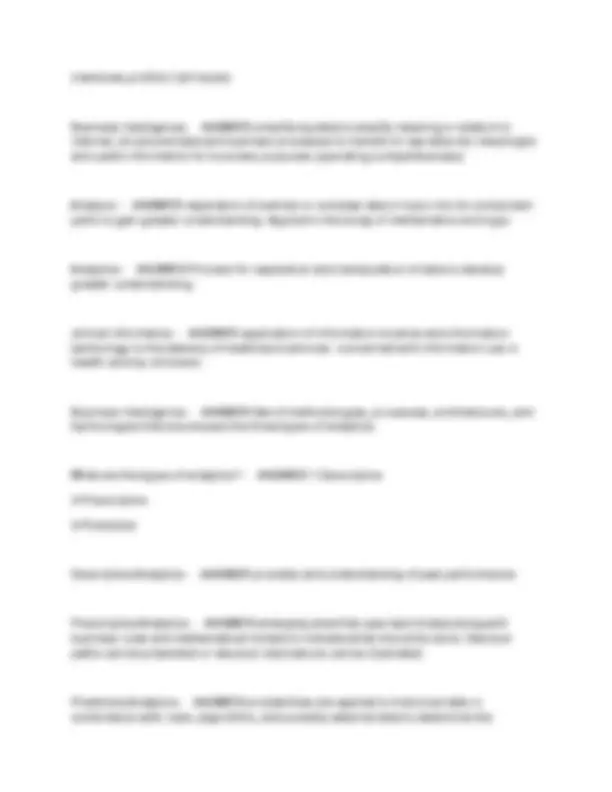
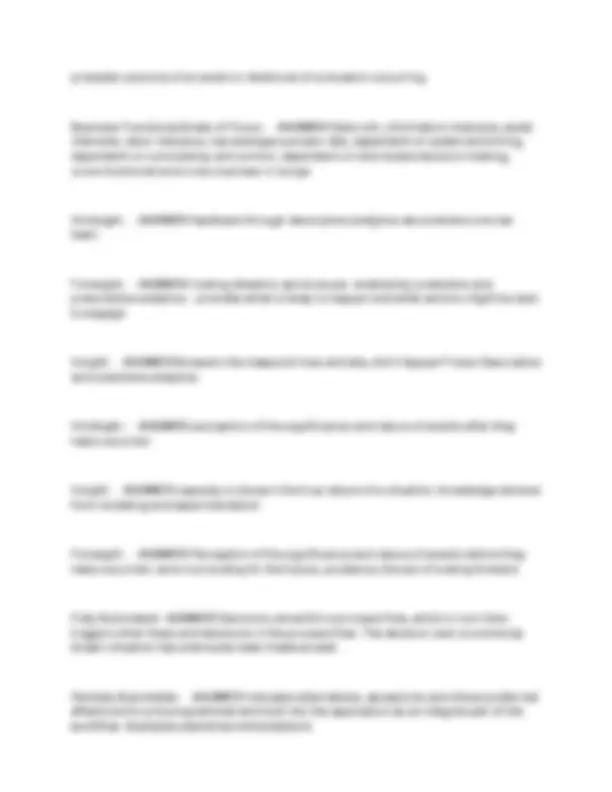

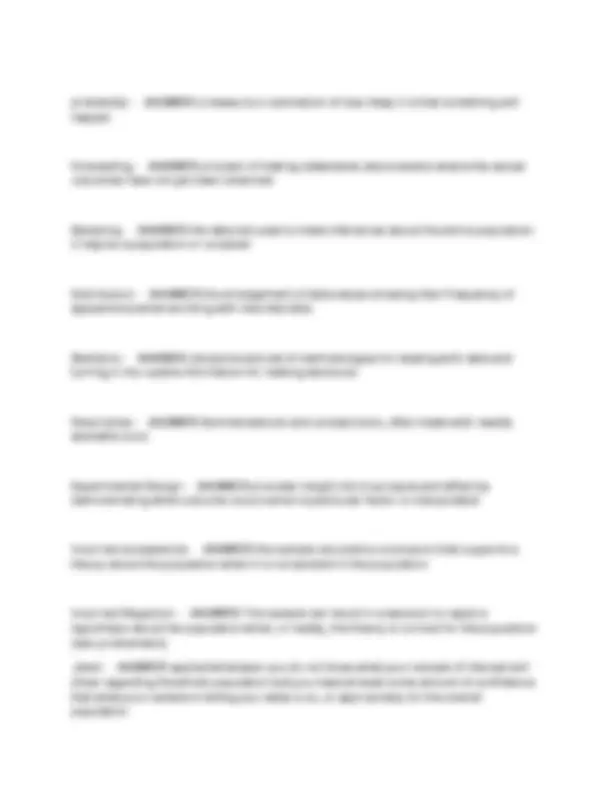
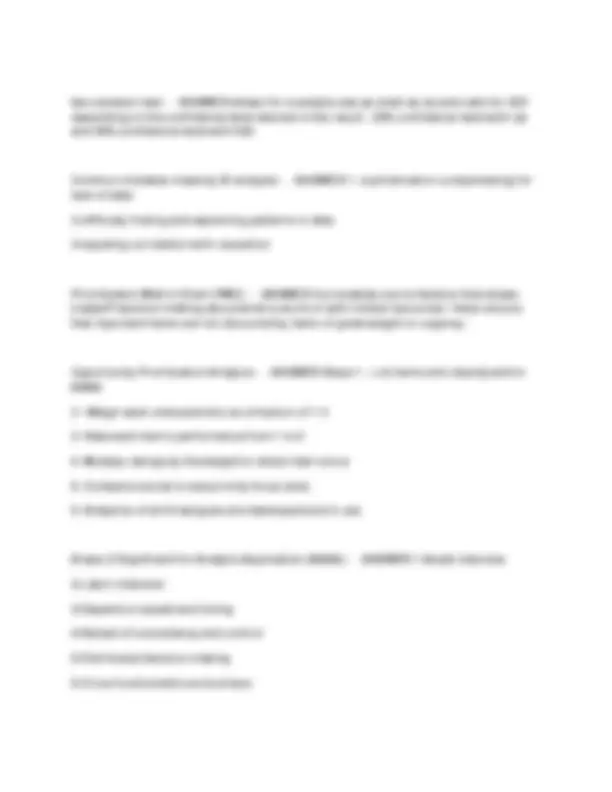
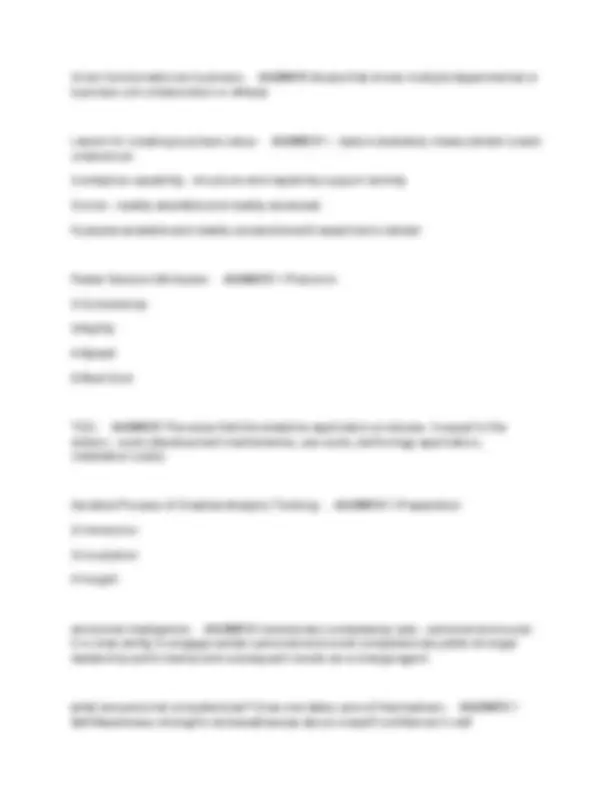
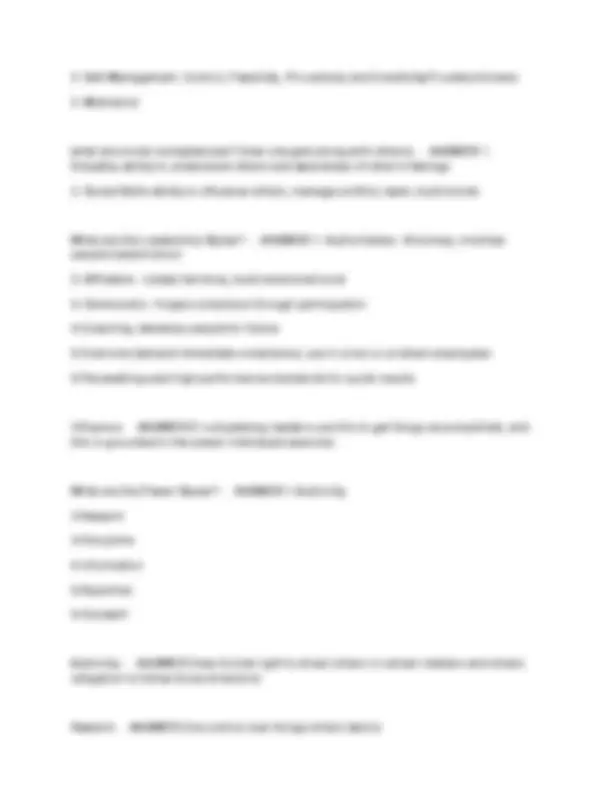
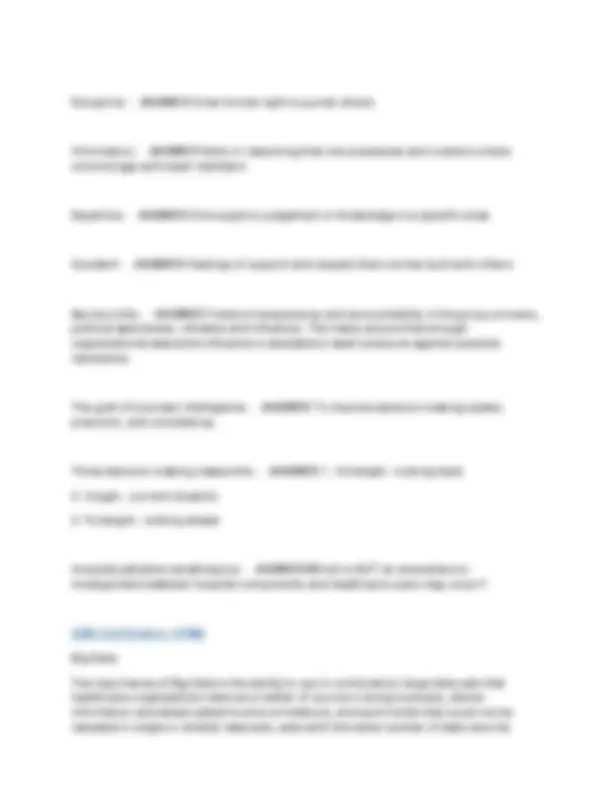
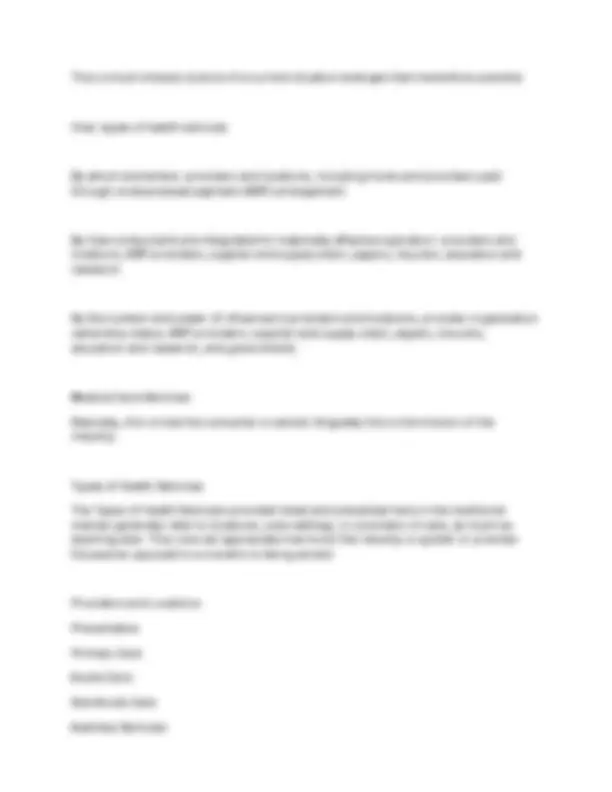
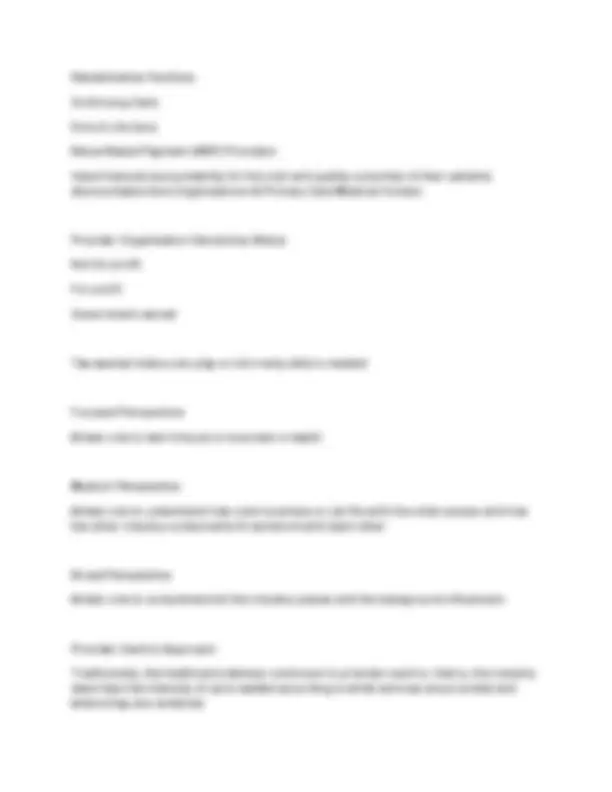
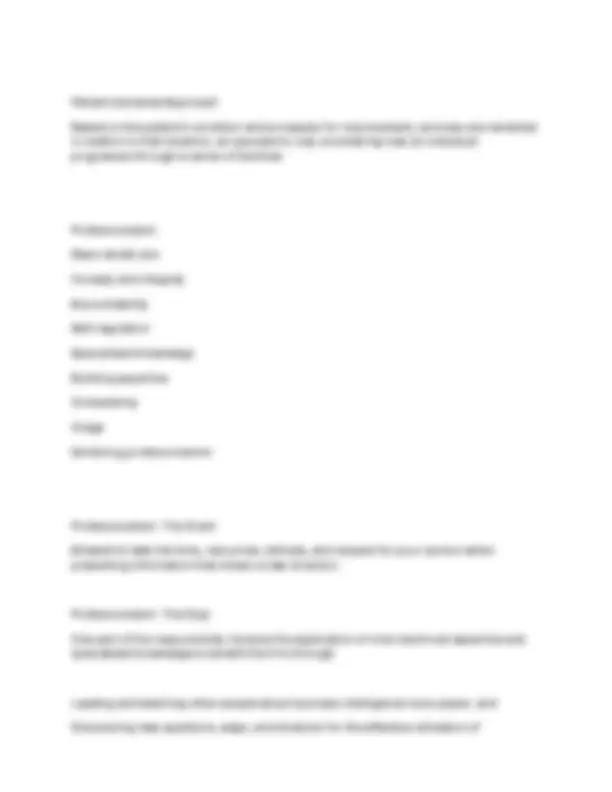



Study with the several resources on Docsity

Earn points by helping other students or get them with a premium plan


Prepare for your exams
Study with the several resources on Docsity

Earn points to download
Earn points by helping other students or get them with a premium plan
Community
Ask the community for help and clear up your study doubts
Discover the best universities in your country according to Docsity users
Free resources
Download our free guides on studying techniques, anxiety management strategies, and thesis advice from Docsity tutors
CSBI HFMA NEW EXAM WITH COMPLETE SOLUTIONS 100% VERIFIED!!
Typology: Exams
1 / 72

This page cannot be seen from the preview
Don't miss anything!

































































What has changed for Healthcare Analytics? -power and storage, decrease in cost; ANSWER 1 - Increased computing 2 - increased abundance of data in healthcare; 3 - increase in individuals having strong competencies Big Data - ANSWER Refers to the Growth in available data, massive continuallyincreasing volume of live and stored data for analysis; and the increase in tools available for highly sophisticated ways to combine and analyze data to yield newinformation and insights. (Size Scope Speed)
Big Data View Points - ANSWER Focused, Broad, Medium Focused Viewpoint - ANSWER Allows one to know the work or business in detail Broad Viewpoint -background influencers ANSWER Allows one to understand all the industry pieces and the
Medium Viewpoint -the other pieces and how the other industry components fit and work with each other ANSWER Allows one to know how one's business or work fits with
NKBDSI - ANSWER Nursing Knowledge Big Data Science Initiative NKBDSI Organization -implementing, and guiding a dynamic plan of action that ensures nursing data are ANSWER National organization committed to developing, captured and available in sharing, comparable formats to help improve health
outcomes. Productivity is generally assessed by A.Benchmarking how many inputs are required B.Looking at the raw number of increased products and services offered C.Looking at the ratio of outputs to inputs D.Looking at market share C. Looking at the ratio of outputs to inputs Explanation: Productivity is a focus on how much input is required for desired qualityoutput.
Which of the following is part of the iterative process of creative analytic thinking. A.Ideation B.Insight C.Distribution
process activity and data produced by process activities that are the subject ofanalytics activity.
Continuous, iterative exploration on individual aggregate situations (e.g., patientlengths of stay, resource management, revenue cycle acceleration, supply chain management) throughout a course of care over time that answers certain questions,what actions are needed, and what is the best that can happen, is known as:
A.Descriptive analytics B.Predictive analytics C.Prescriptive analytics D.Iterative extrapolation C. Prescriptive analytics Explanation: Prescriptive analytics uses the meaningful information derived fromongoing exploration and the probabilities identified to establish a course of reasonable action.
Any business organization, including a healthcare provider organization, is structuredas three main functional areas: operations, marketing, and finance. Why is it important to understand this basic structure for business intelligence/analytics?
A.This structure provides a handy means of comparing organizations. B. This structure appropriately focuses business intelligence into operations and givesthe boundaries of business intelligence activity.
C. This structure offers guidance for the simplification of business analytics. D. This structure encourages a holistic, systemic framework for business analytics. D. This structure encourages a holistic, systemic framework for business analytics. Explanation: Analytics addresses the dynamics and realities of interacting domains andrequires a systemic view for context and accuracy of findings. The key idea is focus -- recognition that organizational attention must be paid to all three functional areascreates focus needed for sustainable success.
Which option is NOT a goal that should be kept in mind when displaying information inmeaningful and usable ways to guide decision-making?
A.Highlight the importance and meaning B.Use pictures C.More words, less graphics D.Less is more
The fundamental goal of business intelligence analytics is to: A.Obtain all pertinent data B.Check the veracity of the data selected C.Derive the one truth within the information that addresses the question D.Make the most appropriate decision C. Derive the one truth within the information that addresses the question Explanation: The one truth enables better decision-making. Better decisions can bemade when information has been discerned to be the correct information and it is not argued that other information and other decision possibilities are valid. A goal oftruth ” helps to focus attention. “ one
The three key large-scale mistakes in business analytics are: A.Sampling errors, errant analytics applications, and loss of focus. B.Unsubstantiated inferences from samples to larger populations, undetected data “ noise, ” , and loss of focus.
C.Difficulty in isolating and explaining patterns in the data, ignoring the processes underthe data, and the fallacy of “ explaining everything one detects. ”
D.Sophistication compensating for a lack of data, difficulty finding and explainingpatterns in the data, and equating correlation with causation.
D. Sophistication compensating for a lack of data, difficulty finding and explainingpatterns in the data, and equating correlation with causation.
Explanation: The main point is that as business intelligence/analytic work grows andthere is a push to move faster, one must move slowly and deliberately. In an effort to look at everything, one often finds noise or "randomness" in the system that ismistakenly believed to be meaningful. These three big mistakes kill the credibility of an analysis.
Traditionally, the healthcare delivery continuum is organized as: A. Physician-dominated B. Patient-centric C. Provider services-centric D. Payer-and-fee-for-service-centric C. Provider services-centric Explanation: The traditional healthcare perspective iswhere do we provide them? ” This perspective has led to a system focused on “ what services do we provide and acute-care treatment.
C. The output is typically of a simplistic, descriptive, and analytic nature providingquantities, comparisons, percentiles and maybe trend lines on graphs
D. Work has been financially focused in nature A, B, C, D
Consumers have played a role in the creation and maintenance of a flawed anddisconnected healthcare delivery system through one specific reality:
A.Consumers generally don ’ t take good care of their health. B.Consumers engage actively in competitive shopping for services. C.Consumers are resistant to “ sticker shock ” i.e., prices are a secondary concern. D.Consumers are disconnected from the impact of their economic decisions. D. Consumers are disconnected from the impact of their economic decisions. Explanation: This is the correct answer. Itdisconnected from the economics of their decisions. Limited cost for consuming the ’ s a problem when consumers of anything are resources predisposes the consumer to always prefer more. Providers seeopportunity-potential markets and become reluctant to integrate or connect.
An essential skill that business intelligence professionals exercise in working with dataselected for an analytics project is:
A.Ongoing questioning of the data's relevance, accuracy, and completeness B.Confirming data is accurate C. Understanding how data systems operate D.Defining the limits of analysis based on data characteristics A. Ongoing questioning of the data's relevance, accuracy, and completeness Explanation: If questioning of data does not arise naturally among data users, then acritical aspect of one's work is to make sure it does.
What is the significance of the list of six leadership styles: authoritative, affiliative,democratic, coaching, coercive, and pacesetting?
A.It identifies preferred types of leadership styles in priority order. B.It identifies the leadership styles appropriate and not appropriate to todayenvironment. ’ s business
C.It is a roadmap to leadership development as an executive. D.It shows how to exercise influence and stimulate action in different circumstances.
A.Establishing viable, fair, and legal employment policies B.Fully leveraging analytics for resource management and planning C.Structuring efficient data capture and usage D.Meeting government regulatory requirements B. Fully leveraging analytics for resource management and planning Explanation: The concept of "standardized work" allows for the analysis of processes,for example, ABC costing, productivity, and optimal resource utilization ( – labor, supplies, equipment). The most significant results of business intelligence activities are: A.Effective resource deployment and cost effectiveness B.Increased decision-making capacity and performance improvements C.Performance improvement and process alignments D.Market understanding and products and services alignment B. Increased decision-making capacity and performance improvements Explanation: The primary outcome and power of business intelligence is the ability to
steer a course for the future. This ability is contingent upon strong decision-makingcapability and the capacity to adjust operations to improve performance.
A powerful vehicle designed to encourage coordination of provider services: A.The Provider Services Coordination Agency (PSCA), a new healthcare regulatorybody with the authority to institute penalties.
B.Accountable Care Organizations (ACOs) C.Consumer Healthcare Boards (CHBs) D.Physician-Payer Relations Circles (PPRCs) B. Accountable Care Organizations (ACOs) Explanation: ACOs can incentivize provider participants to coordinate all componentsacross the continuum.
Professionalism in developing and utilizing business intelligence carried a specialobligation. This special obligation is:
A.To protect all private healthcare information (PHI). B.To provide only the data requested in the reporting form requested.
an event or the likelihood of a situation occurring.
Predictive analysis refers to the skills, technologies, applications and practices forexploration that answer the question(s):
A.What if a trend continues? What will happen next? B.When will a trend end? C.How will a trend end? D.How will a trend end and what should be done? A. What if a trend continues? What will happen next? Explanation: Predictive analysis focuses on the dynamics currently in play and the likelyconsequences/results.
From the perspective of Decision Support (upper left in the diagram), what is the keylesson captured in the illustration?
A. Decision support is concerned only with finance and supply chain operations. B. Decision support needs to discern cross-functional relationships,interconnectedness, and interdependencies when conducting analytics.
C. There are areas such as general administration with which decision support will likelynever be involved.
D. Decision support needs massive resources B. Decision support needs to discern cross-functional relationships,interconnectedness, and interdependencies when conducting analytics.
Explanation: The processes and data (utilized and produced) are generallycross-functional and interconnected. Without this understanding, the full impact of any business analytics is limited.
Sampling is a fundamental feature of experimental design in business analytics. Theprimary purpose of sampling is to:
A.Make inferences about a larger population. B.Narrow the analysis activity. C.Limit generalizations. D.Simplify reporting categories A. Make inferences about a larger population. Explanation: The population may be too large to test in its entirety. If so, a
B.What happened and why C.What happened and what is likely to happen D.What happened and how can successes be repeated and/or failures corrected B. What happened and why Explanation: Descriptive analysis seeks to describe patterns in past activity.
Utilization drivers currently support the fragmented, disconnected healthcareenvironment we experience today. An example of such utilization drivers is “ preference-sensitive care. ” Preference-sensitive care is: A.Physician-centric B.Patient-centered and patient-driven C.Treatment protocols prescribed by payers D.The actual method for adjusting for risk across a population. A. Physician-centric Explanation: Preference-sensitive care is where the course of care selection and
frequency is driven in large measure by physician preference and opinion, which aredriven by different incentives.
What is the fundamental purpose of engaging in business analytics? A.To create accurate intelligence about competitive factors B.To protect the organization ’ s cash position C.To understand what is happening and determine how best to move forward D.To assess organizational products and services viability C. To understand what is happening and determine how best to move forward Explanation: The heart of analytics utilization is knowing what is occurring, internallyand externally, to the organization. Once these realities are grasped, attention can then be turned to how to respond moving forward.
The purpose of a “ medical home ” is to: A.Keep all personal medical records in one location B.Foster long-term relationships with specific clinicians